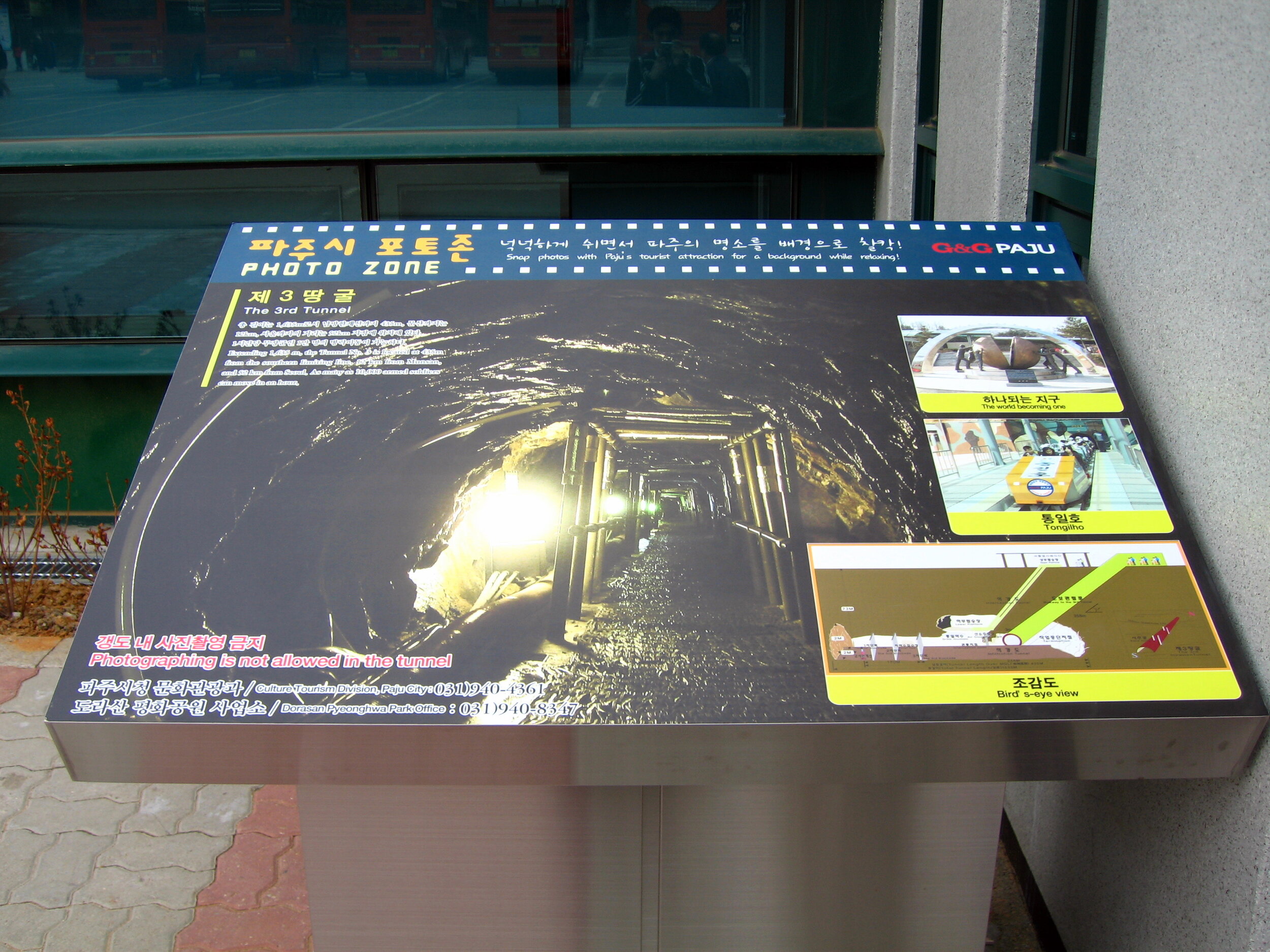No Man's Land
While there have been volumes of eerie documentaries on the North and South Korea Demilitarized Zone (DMZ), nothing compares to seeing the 38th Parallel face-to-face. The photo above was taken from the observation deck on the South border.
The DMZ is a 248 kilometer-long and four kilometer-wide buffer zone. For a short video introduction its history, click here. Since it's no man's land, the DMZ has become an animal sanctuary which the United Nations (UN) plans to declare as a national heritage site. But this might be tough because both sides have only declared an armistice, not a peace treaty, so the two are still at war.
The DMZ is a short bus ride up north from Seoul so it's an easy day trip. If you want an awesome story to tell, don't miss this!
According to our guide, when the North noticed that the South had put up a flag on their border, the North decided to make one for themselves and they made sure it had a bigger flag and a taller flagpole. The South saw what the North had done so they built an even larger and taller flag. This went on and on and today, North Korea has the biggest flag and the tallest flagpole in the world at 270 kg (600 pounds) and 160 meters.
The North sometimes allow refugees who got separated from their families when the border was put up to be reunited with their loved ones. Refugees who couldn’t find their kin wrote and hung letters on the gates. A mother who hasn't seen her child for over 25 years was still looking for her, hoping that she’s still alive.
My tour group visited an “immigration office” where we received a North Korean immigration stamp on our passports. We then went to an exhibit area to watch a short video on the DMZ. They showed us clips of families reuniting at the border which moved a few people in our group to tears.
According to our guide, the North was caught building tunnels through the DMZ. The South caught them by putting huge vats of water on the ground. Water seeping through the soil meant that there was a tunnel underneath. The South asked the North about the suspicious tunnels. The North responded, "Oh.. we're mining." Unconvinced, the South built a tunnel from their end of the DMZ to connect the tunnel built by the North. They noticed that the tunnel was painted black and precious stones were conveniently lodged between rocks. The North insisted, "See, we were mining!"
The South found out that there were three other tunnels under construction. One tunnel was huge enough to transport tanks and 100,000 troops in a few hours. Part of the tour was a visit to the tunnel for infantry. We noticed that the tunnel was small and cramped, one had to bend to fit. Apparently, because of poor food quality, North Korean soldiers were smaller compared to South Korean soldiers hence the tunnel’s size.
From the observation deck, you’ll see barren land and dried up bushes. The North Korean flagpole is visible from here. The air was thick with dust, the silence deafening. Our guide shared that when tensions mount, one shouldn't point a finger to the North as this was considered disrespectful. The Nothe could retaliate by putting a bullet in your head. This is probably an exaggeration but who knows?
Overall, I left the DMZ filled with hope. We saw symbols that show how both sides long for reunification. While peace and stability are their greatest aspiration, politics seems to be getting in the way. The North and South Korean divide was never just about them two -- it's a complex interplay of interests amongst the two and their allies. But this deserves a whole new entry.







